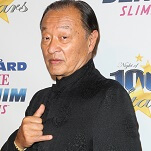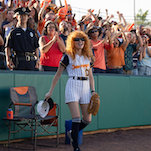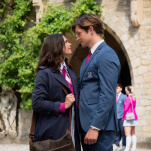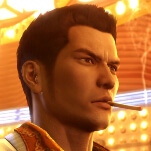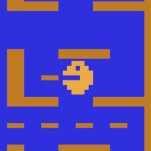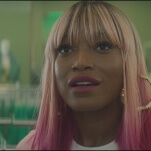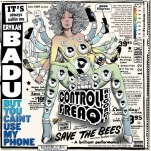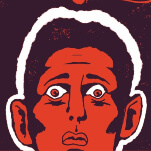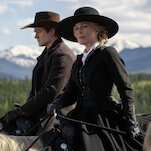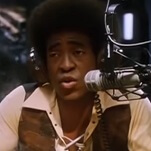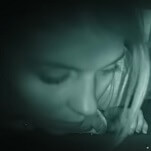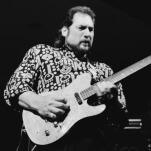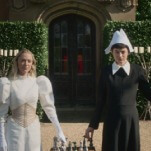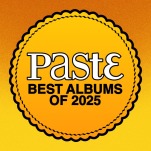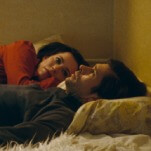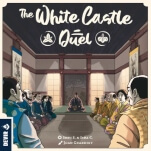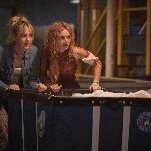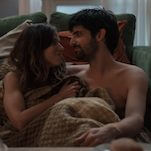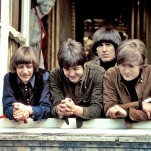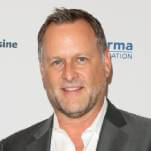One of the disadvantages of being a trailblazer is that people tend to focus on the trail and overlook the blaze. When Spike Lee emerged in the mid-’80s, there were virtually no African-American film directors of note (not that we’re exactly deluged with them today), so the media instantly appointed him as the spokesman for Black Cinema. That wasn’t entirely inaccurate—if you name your production company 40 Acres And A Mule Filmworks, after the U.S. government’s broken promise to former slaves, you’re obviously making a deliberate, pointed statement. But the emphasis on Spike Lee, cultural pioneer and sociopolitical gadfly, couldn’t help but obscure most people’s view of Spike Lee, radical stylist and aesthetic visionary. Few American filmmakers have been so relentlessly innovative, yet Lee rarely gets named alongside the likes of Martin Scorsese, David Lynch, or Terrence Malick when the conversation turns to purely visual mastery. He’s admired and respected, but an element of sheer awe seems to be missing.
If you had described this confrontation to me before I saw it, or had even shown me the shooting script, I would never remotely have imagined something so boldly heightened. You’ve already got a bunch of pissed-off, literally overheated macho dudes yelling obscenities and racial slurs, which seems like drama a-plenty. And we’re talking here about an incident that was inspired by several real-life hate crimes, most notably a 1986 attack in Howard Beach, Queens (which gets explicitly name-checked shortly after this clip ends). Something very serious, in other words. Most directors’ natural inclination would be to shoot it as simply as possible and let the turbocharged vitriol speak for itself. Lee chooses instead to double down, creating a visual correlative to the full-volume blast of Radio Raheem’s boom box. (Somebody should create an updated version of the movie in which Radio Raheem walks around holding an iPod, ignored by everybody he encounters.) Toward the end, it actually feels as if the film itself is shouting.
Looking at the scene again, though, I see that it’s actually laid out in three distinct movements, syntax-wise. At the outset, when Sal reflects on what a great day they had (which is like the dogface in a war movie who breathes a sigh of relief that he made it, just before getting shot), the camera drifts lazily around the pizzeria, moving from face to face, picking up Sal from behind the juice dispensers, finally settling on Mookie’s priceless expression when Sal tells him he’ll always have a job there. When the four kids (including a then-unknown Martin Lawrence) show up seeking a last-second slice, Lee switches briefly to conventional coverage, moving the camera only to follow the actors, and employing more frequent cuts. This is actually one of the only stretches in which Do The Right Thing looks like an ordinary movie, most likely because Lee realized that what’s coming wouldn’t have the proper impact unless it displaced something fairly routine. (As with form, so with content: The four kids are necessary to provide a mundane counterpoint to the politicized belligerence of Raheem, Buggin Out, and Smiley.)
Having employed Public Enemy’s “Fight The Power” throughout the film, starting with the stunning opening-credits sequence, Lee can now use its maddeningly insistent rhythm to announce Radio Raheem and company’s arrival before they’re even shown. And once he does cut to them, all hell breaks loose in the form of multiple Dutch angles, composed for maximum lurid effect. At this crucial dramatic juncture, Lee essentially turns his principal cast into Batman villains, creating the impression that everyone involved is equally maniacal; it’s a technique usually reserved for either horror or camp, implying that racial hostility is some unholy amalgam of the two. Even the actors’ movements are heavily stylized—in my favorite touch, quick shots of Sal’s two sons, Pino (John Turturro) and Vito (Richard Edson), show each one in fits of agitation that make them look for all the world as if they’re dancing to the music. (Also sweet is the insert of the boxing photo in the middle of the brawl, revealing that there is in fact a brother on the Wall Of Fame, sort of. Rocky Marciano vs. Archie Moore, yes? I can’t be sure.)
As with all great filmmaking, the glory of this sequence resides not merely in the overall conception—“let’s cant everything to suggest instability”— but in the precision of each individual composition (credit to ace cinematographer Ernest Dickerson) and the dynamic way one shot bounces off another (via Lee’s longtime editor, Barry Alexander Brown). How that works can be tough to articulate, even though that’s my job in this column. For example, in the series of stunned reaction shots after Sal destroys Raheem’s radio, I find it incredibly powerful that Lee retains the overhead setup of the booth where the four kids sat, even though the three boys got up and only the girl remains, cowering in one corner. But I’m not sure why. It’s got nothing to do with her—she’s completely unimportant. It’s about space, somehow. As if the conflict had carved Sal Pizzeria’s into discrete units, each with its own integrity, and now we’re surveying not the people specifically—the three boys are seen only in the background—but those fragmentary units. I know that sounds pretentious, but it’s the best rational explanation I have for what’s essentially an unconscious emotional effect. Cutting to a close-up of the girl, thereby acknowledging that the composition of the room has changed, would have ruined it.
In any case, I find it hilarious that people once watched this scene (and the scene with the police that follows) and were consumed with wondering whether audiences would leave the theater and immediately start tossing garbage cans through plate-glass windows. That controversy seems quaint today, but Do The Right Thing’s vividly expressive filmmaking hasn’t aged one iota. With any luck, we may one day have enough distance from Spike Lee’s instrumental role in creating an African-American film movement to recognize that his artistry transcends race. He’s made great movies, passable movies, terrible movies, but he’s always in there swinging.







